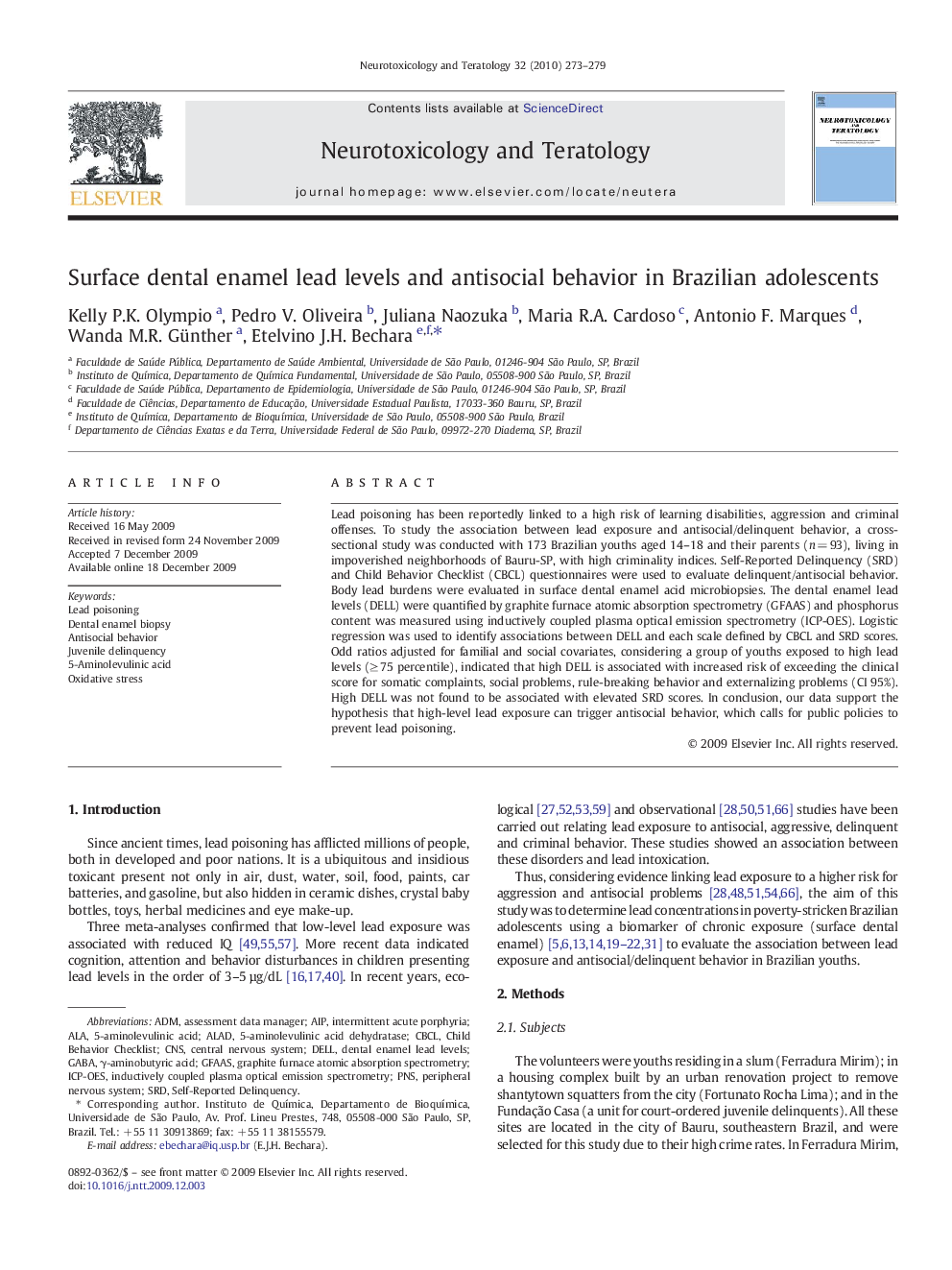| Article ID | Journal | Published Year | Pages | File Type |
|---|---|---|---|---|
| 2591782 | Neurotoxicology and Teratology | 2010 | 7 Pages |
Abstract
Lead poisoning has been reportedly linked to a high risk of learning disabilities, aggression and criminal offenses. To study the association between lead exposure and antisocial/delinquent behavior, a cross-sectional study was conducted with 173 Brazilian youths aged 14-18 and their parents (n = 93), living in impoverished neighborhoods of Bauru-SP, with high criminality indices. Self-Reported Delinquency (SRD) and Child Behavior Checklist (CBCL) questionnaires were used to evaluate delinquent/antisocial behavior. Body lead burdens were evaluated in surface dental enamel acid microbiopsies. The dental enamel lead levels (DELL) were quantified by graphite furnace atomic absorption spectrometry (GFAAS) and phosphorus content was measured using inductively coupled plasma optical emission spectrometry (ICP-OES). Logistic regression was used to identify associations between DELL and each scale defined by CBCL and SRD scores. Odd ratios adjusted for familial and social covariates, considering a group of youths exposed to high lead levels (â¥Â 75 percentile), indicated that high DELL is associated with increased risk of exceeding the clinical score for somatic complaints, social problems, rule-breaking behavior and externalizing problems (CI 95%). High DELL was not found to be associated with elevated SRD scores. In conclusion, our data support the hypothesis that high-level lead exposure can trigger antisocial behavior, which calls for public policies to prevent lead poisoning.
Keywords
AIPICP-OESALASRDADMCBCLGFAAS5-Aminolevulinic acid dehydratase5-Aminolevulinic acidInductively coupled plasma optical emission spectrometryγ-aminobutyric acidJuvenile delinquencyOxidative stressCNSAntisocial behaviorcentral nervous systemperipheral nervous systemGraphite furnace atomic absorption spectrometryLead poisoningALADChild Behavior ChecklistPNSGABA
Related Topics
Life Sciences
Environmental Science
Health, Toxicology and Mutagenesis
Authors
Kelly P.K. Olympio, Pedro V. Oliveira, Juliana Naozuka, Maria R.A. Cardoso, Antonio F. Marques, Wanda M.R. Günther, Etelvino J.H. Bechara,
